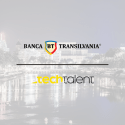At its core, this model encapsulates a collaborative venture with a specialized third-party service provider, tasked with the meticulous construction and nurturing of a project or service from its inception to its completion. This intricate process involves not only the establishment of a robust technical and physical infrastructure but also the orchestration of a dedicated team poised to steer the project towards its predetermined milestones. In essence, the BOT model is a testament to strategic foresight, blending the prowess of expert external management with the ambitious vision of the client company, thereby ensuring a seamless transition of control upon the project’s maturity.
This model's appeal stems from its inherent flexibility and the promise of operational efficiency and strategic scalability. It allows client companies to bypass the daunting challenges associated with setting up and managing new ventures, from the technical complexities to the bureaucratic hurdles, by entrusting these responsibilities to seasoned service providers. The latter, equipped with the right expertise and resources, are adept at navigating the intricacies of project development, from laying down the initial groundwork to scaling operations to meet evolving demands. As such, the BOT model not only accelerates the path to market entry but also ensures that the ventures it fosters are built on a foundation of resilience and adaptability. In the following, we will examine the evolving Build-Operate-Transfer (BOT) model, focusing on its adaptation to new technologies, agile methodologies, and an increased focus on sustainability and compliance.
Evolution Amidst Technological Transformation
The relentless pace of technological innovation, characterized by breakthroughs in artificial intelligence, cloud computing, and big data, demands that the BOT model evolve. This evolution is much more than simply integrating new technologies into existing frameworks; it signifies a profound shift in how the BOT model is applied within the software development sector. As these technologies mature and become more ingrained in our daily operations, they bring about changes in project management, operational efficiency, and even in the strategic objectives that projects aim to achieve.
In the context of AI, for instance, the BOT model is adapting to incorporate intelligent automation and predictive analytics, enabling projects to be more adaptive and insights-driven. Cloud computing offers unparalleled scalability and flexibility, allowing BOT projects to expand or contract resources dynamically in response to demand. Meanwhile, the explosion of data from diverse sources necessitates big data analytics within the BOT framework, ensuring that decision-making is informed by comprehensive, real-time data analyses.
This evolution also reflects a broader move towards more agile, responsive project management practices. Traditional BOT projects, with their predefined timelines and deliverables, are being transformed into more fluid, adaptable engagements. These projects are now designed to rapidly iterate and pivot in response to market feedback or technological advancements, underscoring a shift from rigid, linear project development to a more flexible, outcome-oriented approach.
Hence, the changes we see in the BOT model are not just about technology adoption but about rethinking the model's very essence to stay aligned with the digital transformation sweeping across industries. This adaptation is critical for maintaining the relevance and effectiveness of the BOT model in a landscape where change is the only constant.
Leveraging Cutting-edge Technologies
The integration of cutting-edge technologies stands as a cornerstone in the evolution of the Build-Operate-Transfer (BOT) model, marking a significant shift towards more sophisticated, efficient, and responsive software development practices. Service providers at the forefront of this transformation are leveraging the power of artificial intelligence (AI) and machine learning (ML) not just as tools but as integral components of the development process. By embedding AI and ML into their methodologies, these providers can enhance project accuracy, automate routine tasks, and employ predictive analytics to foresee and mitigate potential challenges before they escalate. This proactive approach to project development not only streamlines operations but also significantly improves decision-making processes, ensuring that projects are not only completed within shorter timelines but also with enhanced outcomes that closely align with client expectations.
Furthermore, cloud computing has emerged as a pivotal technology in augmenting the BOT model's capacity for scalability and flexibility. The cloud's inherent nature allows for the dynamic allocation of resources, providing the ability to effortlessly scale operations up or down based on the project's requirements or changes in demand. This scalability is crucial in today's fast-paced market environment, where the ability to quickly adjust to new developments or consumer needs can be the difference between success and obsolescence. Moreover, cloud computing facilitates a level of operational flexibility previously unattainable, enabling service providers to deploy updates, test new features, and manage infrastructure more efficiently, thereby reducing downtime and accelerating the time-to-market for new innovations. Together, AI, ML, and cloud computing are not just enhancing the BOT model; they are redefining it, enabling projects to be more adaptive, intelligent, and aligned with the rapidly evolving digital landscape.
Agile Methodologies
The incorporation of agile methodologies into the Build-Operate-Transfer (BOT) model marks a significant paradigm shift, transforming it into a more versatile and responsive framework. Agile methodologies, characterized by their emphasis on flexibility, collaboration, and customer feedback, have revolutionized the way projects are managed and executed. By adopting these principles, the BOT model has greatly enhanced its ability to handle the dynamic nature of software development. This transition to a more agile BOT model facilitates faster development cycles, enabling projects to move from conception to completion at a speed that traditional methods could not match. Moreover, the iterative nature of agile practices allows for continuous refinement and improvement of the project in response to client feedback or evolving market trends. This ensures that the final product is not only of high quality but also fully aligned with the client’s needs and expectations.
Furthermore, this shift towards agile methodologies has empowered the BOT model to be more adaptive to changes, whether they arise from new technological advancements, regulatory updates, or shifts in consumer preferences. Through regular iterations and ongoing engagement with the client, service providers can swiftly pivot their strategies and development efforts to address these changes, minimizing disruptions and maintaining project momentum. This level of responsiveness is critical in today's fast-paced business environment, where the ability to quickly adapt to new information can provide a competitive edge. By integrating agile methodologies, the BOT model now offers a framework that is not only efficient and client-focused but also resilient and adaptable to the ever-changing landscape of the tech industry.
Sustainability and Scalability
The evolution of the Build-Operate-Transfer (BOT) model has been significantly influenced by the growing imperative for sustainability and scalability within the tech industry. Service providers are now integrating sustainable development practices into their operations, aiming to minimize environmental impact and promote social responsibility throughout the lifecycle of their projects. This shift towards sustainability is not just about adhering to regulatory requirements or ethical considerations; it's a response to the increasing demand from clients and consumers for eco-friendly and socially responsible business practices. By embedding these principles into the BOT model, service providers are ensuring that projects are not only more environmentally sustainable but also resonate more deeply with the values of modern consumers. This commitment to sustainability helps in future-proofing the projects, making them more adaptable to evolving regulatory landscapes and consumer expectations.
Simultaneously, the emphasis on scalability within the BOT model addresses the critical need for projects to accommodate growth and adapt to changes over time efficiently. Scalability ensures that the solutions developed can handle increased loads or expand in scope without requiring a complete overhaul, thereby safeguarding the investment over the long term. This aspect of the BOT model is particularly valuable in today's rapidly changing business environment, where new technologies, market dynamics, and consumer behaviors can quickly render a once cutting-edge solution obsolete. By prioritizing scalable solutions, the BOT model allows for incremental enhancements and adjustments, ensuring that the project remains relevant and continues to deliver value to the client as their business evolves. This dual focus on sustainability and scalability is transforming the BOT model into a more resilient, adaptable, and responsible framework, aligning it with the broader shifts towards environmental stewardship and long-term viability in the tech industry.
Advanced Risk Management and Compliance
In the intricate web of today’s global regulatory environment, the importance of robust risk management and stringent compliance protocols cannot be overstated, especially within the framework of the Build-Operate-Transfer (BOT) model. As software development projects become increasingly complex and subject to a myriad of international laws and standards, service providers have had to significantly elevate their approach to risk and compliance management. This involves the integration of advanced security measures, such as encryption, multi-factor authentication, and continuous monitoring systems, right from the project's inception. Additionally, comprehensive compliance management systems are implemented to ensure that every aspect of the project aligns with industry regulations, data protection laws, and privacy standards. This proactive stance on risk management and compliance is crucial not only for meeting the current regulatory requirements but also for establishing a flexible foundation that can swiftly adjust to future changes in legislation.
Going forward, this enhanced focus on risk management and compliance within the BOT model acts as a critical safeguard, protecting both the service providers and their clients from the reputational damage and operational disruptions that can arise from security breaches or regulatory non-compliance. By embedding these protocols into the core of the BOT strategy, providers can offer a more secure and reliable path to project development and transfer, one that anticipates potential risks and has measures in place to address them promptly. This level of preparedness and foresight is invaluable in navigating the uncertainties of the tech landscape, ensuring that projects can proceed smoothly without being derailed by unforeseen legal or security challenges. Ultimately, this approach not only enhances the resilience and reliability of the BOT model but also positions it as a forward-thinking solution in an era where risk management and compliance are increasingly critical to the success and sustainability of technology projects.
Conclusion
The Build-Operate-Transfer model embodies strategic flexibility, risk mitigation, and partnership, principles that are increasingly vital in the fast-evolving tech industry. Through its evolution, the BOT model is incorporating technological advancements, agile practices, and a focus on sustainability and compliance, thereby enhancing its efficacy and relevance. For companies navigating the complexities of software development and market expansion, the modern BOT model offers a comprehensive strategy for achieving their goals with innovation, efficiency, and a forward-looking perspective.



